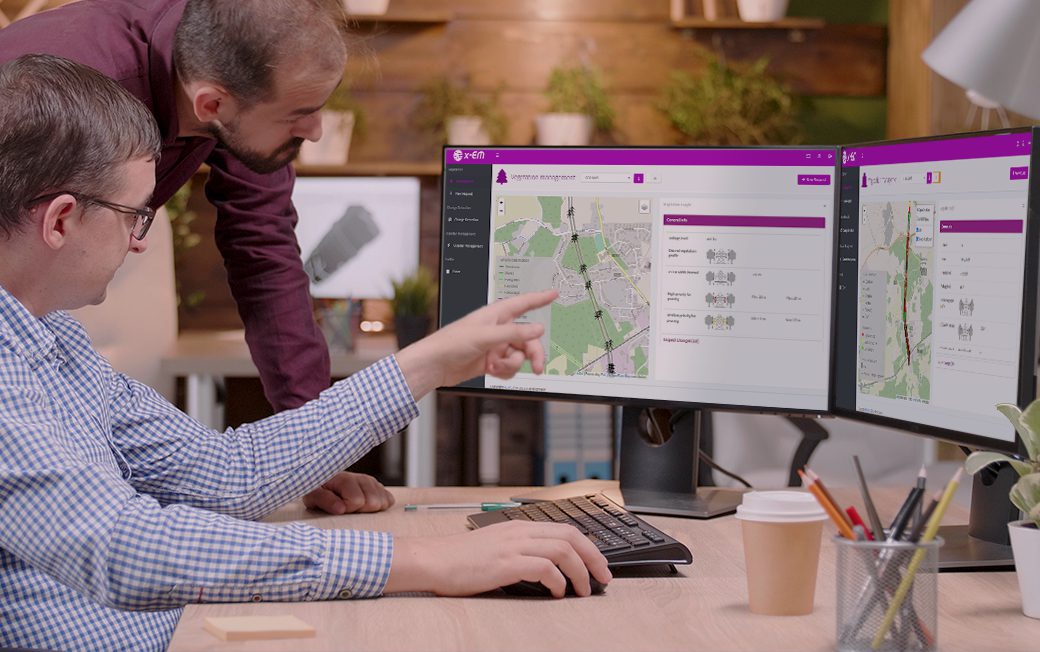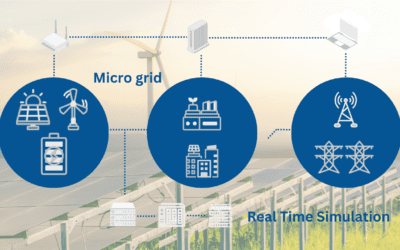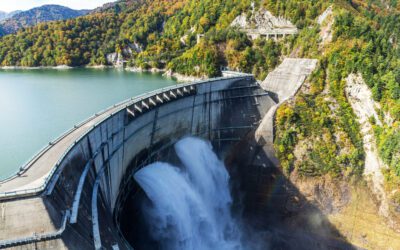Vegetation poses a significant challenge for many utility companies. It often grows in unexpected and unpredictable ways, making it extremely difficult to manage. Previous vegetation management strategies have proved expensive and inefficient.
However, a new generation of digital solutions is revolutionising the sector, giving utilities the tools to accurately monitor and manage vegetation, as this is a matter of public safety and affects the entire community. In the process, digital solutions are helping to reduce maintenance costs, improve service levels and minimise risks.
What is vegetation management?
Vegetation management involves monitoring, maintaining, and controlling vegetation around critical utility infrastructure. i-EM‘s service helps protect electric lines or power plants from unwanted vegetation and helps the TSOs, DSOs and infrastructure operators involved make the best decisions thanks to our data-driven knowledge.
This ensures the proper functioning of infrastructure, prevents damage, and streamlines maintenance by capturing the current state of vegetation across a territory: roads, railroads, power lines, pipelines, and transmission towers.
In the past, vegetation management was done through personal spot checks, reports, and scheduled maintenance, which made this work expensive, slow, and often lacking in detail. Fortunately, new technologies now exist to facilitate real-time oversight and minimize service interruptions, thanks to AI-powered and cloud-based monitoring.
A proper treatment plan can significantly reduce risks and maintenance efforts.
Have you ever wondered what damage overgrown vegetation can cause?
Poorly managed vegetation poses several risks that we can briefly list:
● Damage to infrastructure – Vegetation can damage infrastructure when it comes into contact with it. For example, falling trees can bring down power lines, and roots can damage underground utilities.
● Safety – Overgrown vegetation can obstruct the visibility of signals and signs, which can lead to accidents. It can also impede access to infrastructure during emergencies.
● Electrical and Communications Systems – Vegetation that grows too close to power lines or telecommunications cables can pose a safety hazard by increasing the risk of power failures, interruptions, and communications outages.
● Fire Hazard – Vegetation near infrastructure can provide fuel for wildfires, increasing the risk of fire spreading to critical infrastructure.

What does vegetation management involve?
Vegetation management addresses these issues in several ways:
● Clearing – removing trees, shrubs, and plants that pose an immediate hazard or obstruct aspects of infrastructure. This may include cutting, pruning, or trimming vegetation to maintain safe clearances.
● Maintenance – regular monitoring and maintenance of vegetation along infrastructure corridors to control growth and prevent interference. It may include regular trimming, mowing and herbicide application to manage vegetation growth.
● Planning – developing long-term vegetation management plans that consider factors such as plant species, growth rates, climatic conditions and specific infrastructure requirements.
● Environmental considerations – balancing ecological factors to minimise the impact on the surrounding environment. For instance, preserving specific types of vegetation for conservation purposes or to control other plant life.

What are the benefits of vegetation management?
There are four main benefits associated with vegetation management.
- Infrastructure safety and damage-prevention
- Reliability and service continuity
- Environmental leadership
- Cost-efficiency
Effective vegetation management reduces maintenance costs for utilities by ensuring that the right maintenance actions are taken at the right time, before vegetation damages infrastructure or a costly accident occurs.
What kind of vegetation management product can be used?
i-EM offers x-EM, a Software as a Service (SaaS) that introduce intelligence in the management of Grid Edge, an innovative business platform, that helps organisations in the management of energy solutions, improving their resilience and optimising performance in the process, using satellite map overlays, the platform enables utility companies to identify vegetation growth problematic and take remedial action in a timely and cost-effective manner.
i-EM synergistically worked with FlySight, both controlled companies of the Flyby group, developing together, within ESA, SP4GO (SP4GO | ESA Business Applications) project; a solution for the vegetation management, starting from the observation of the object, using different applications and combining data remotely, including systems for augmented reality and 3D rendering, and creating a tailor made product for the end user.
The future of vegetation management
Nowadays, the way in which we work has profoundly changed, everything is fast and people are less and less dedicated to care. i-EM offers the possibility to help all operators by combining the synergy between machines and human, helping companies to monitor and prevent possible causes of damage with its solutions.
Digitally-driven vegetation management is essential if utility companies are to transition to a safe, reliable and cost-efficient vegetation management strategy. Using our advanced smart grid platform, organisations can identify issue before they become significant problems, reducing intervention costs and preventing service interruptions, damage or safety incidents.






